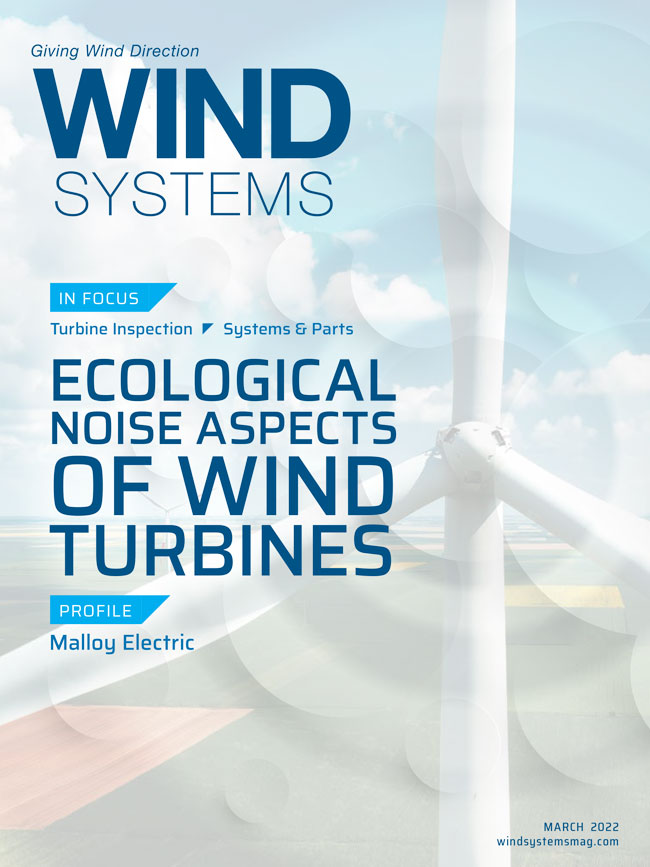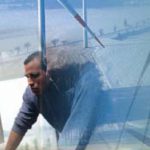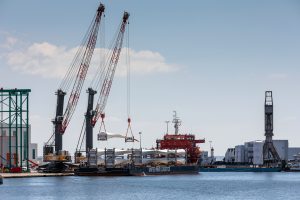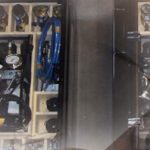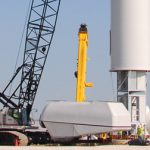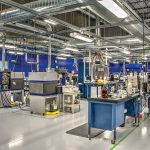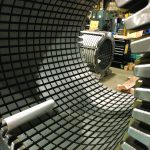Bearings found in wind turbines come in an amazing variety of sizes, and when a bearing starts to show wear or fatigue, replacement time is of the essence in order to avoid any costly downtime.
When this happens, it’s critical that owner-operators can get upgraded replacements as quickly as possible, and that’s where Malloy Electric enters the picture.
“We carry a large inventory of wind-specific bearings covering most of the installed models in the U.S.,” said Cory Mittleider, wind business unit manager for Malloy Electric. “We support operators, service providers, and even OEMs. Our inventory and production pipeline allows us to ship immediately for an urgent need or supply on a schedule for repair campaigns and repower projects. We also have critical storage warehouses where we store and care for customer-owned assets until dispatched.”
Malloy Electric strives to be technical experts in three categories: motors, electrical, and mechanical, according to Mittleider, and that expertise is essential to Malloy choosing the proper products to stock, as well as how many.
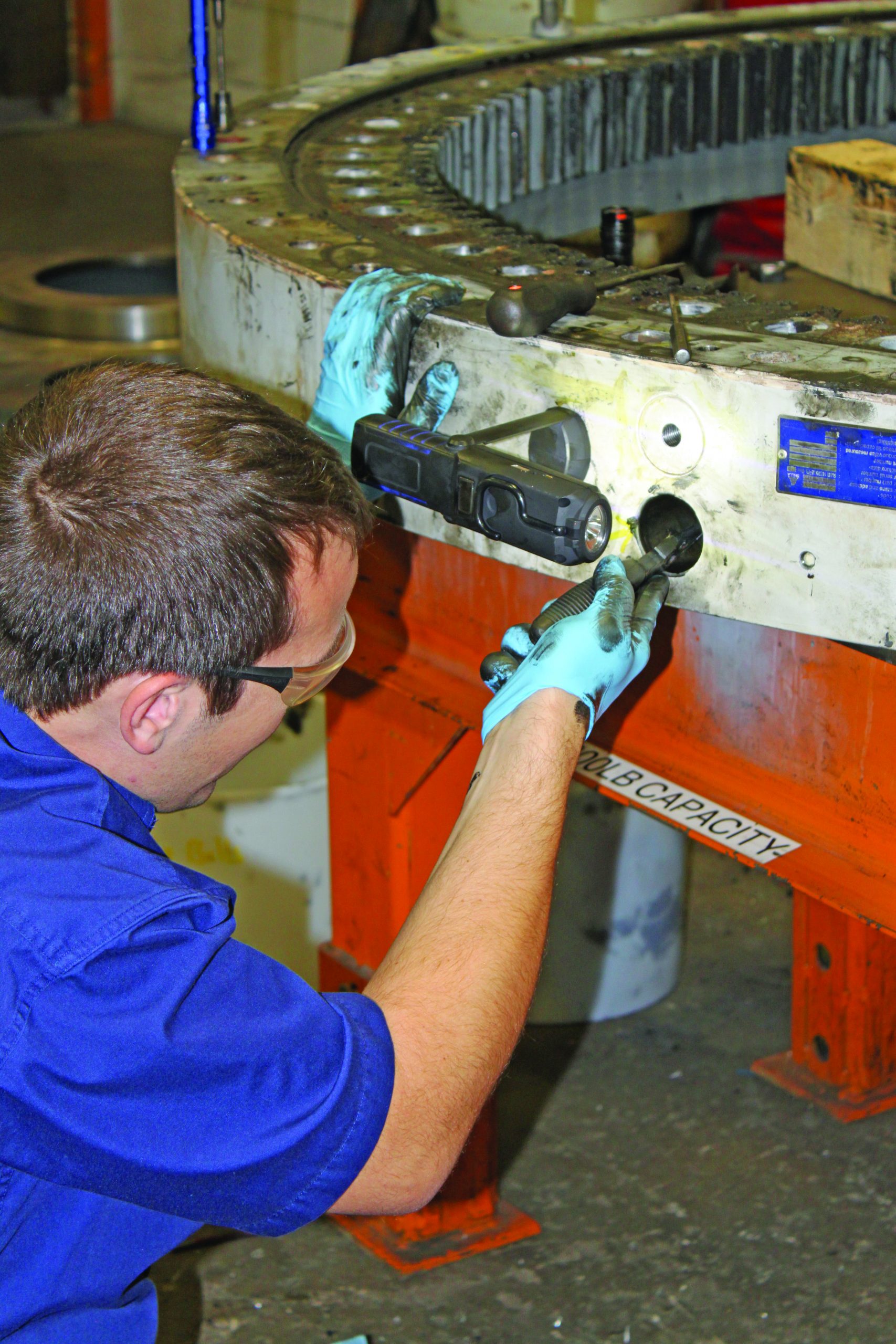
Malloy’s wind division
“Our wind division has the same philosophy with an emphasis on mechanical,” he said. “We’ve been involved with failure analysis and upgrades on most bearing applications in wind turbines including pitch-motor bearings that fit in your hand, gearbox bearings that range from 100 millimeters to 900 millimeters, main shaft bearings that weigh 3,000 pounds, and blade bearings that are nearly three meters in diameter.”
As part of Malloy’s electrical division, the company is also heavily involved with making sure obsolete components are addressed quickly, according to Mittleider.
“There have been multiple projects now where either a breaker or a contactor that’s used in the wind turbines becomes obsolete,” he said. “They can no longer either replace it or cost effectively repair it. Our electrical group, combined with our UL 508A panel shop, has developed retrofit kits where we use a new product, current generation breaker, and then adapt the mechanical fitment, and electrical connection interface to the existing design.
Because, unfortunately, when electrical manufacturers obsolete old product to roll out new ones, the fitment’s never the same. It’s always a different shape, different size, or it mounts in a different place. That’s where we’ve used our electrical group to look at that new product and develop retrofits to make it as easy as possible for those in the field.”
Investigating problems
Being a bearing distributor, Malloy spends a lot of time doing investigations, which, according to Mittleider, makes the company a little different than most distributors.
“We have a great depth of knowledge, and we have many engineers on staff,” he said. “We want to be super technically focused and know what we’re selling. We don’t just grab a part number and say, ‘Hey you failed one of these, can I get you another?’ Everybody knows that’s not the way to solve a problem. We like to ask why? Why did it fail? Let’s discuss and investigate that. And that’s why we’re doing the tear downs and the failure analysis. The way to solve the problem is to ask more questions and understand why it failed. How can it be improved — whether it’s the component, the bearing itself, or one of the other outside factors that need to be improved on.”
Malloy Electric works with some of the largest bearing manufacturers in the world, and because the company has such expertise with systems failures, it often plays a critical role in developing solutions, according to Mittleider. Certain bearings Malloy will send back to the manufacturer’s lab, but other bearing types can be dismantled and analyzed in Malloy’s in-house facility in doing those investigations.
“We stay in very close correspondence on these applications with those manufacturers and say, ‘This is what we’re learning; these are the measurements we’re taking; this is the feedback we’re getting from the site that sent us the failure; we discuss the best way to use these findings to improve the bearing in this application,” he said. “But typically, with a bearing manufacturer, we’re looking at what we can do to make that bearing live in environments and applications that we know are difficult.”
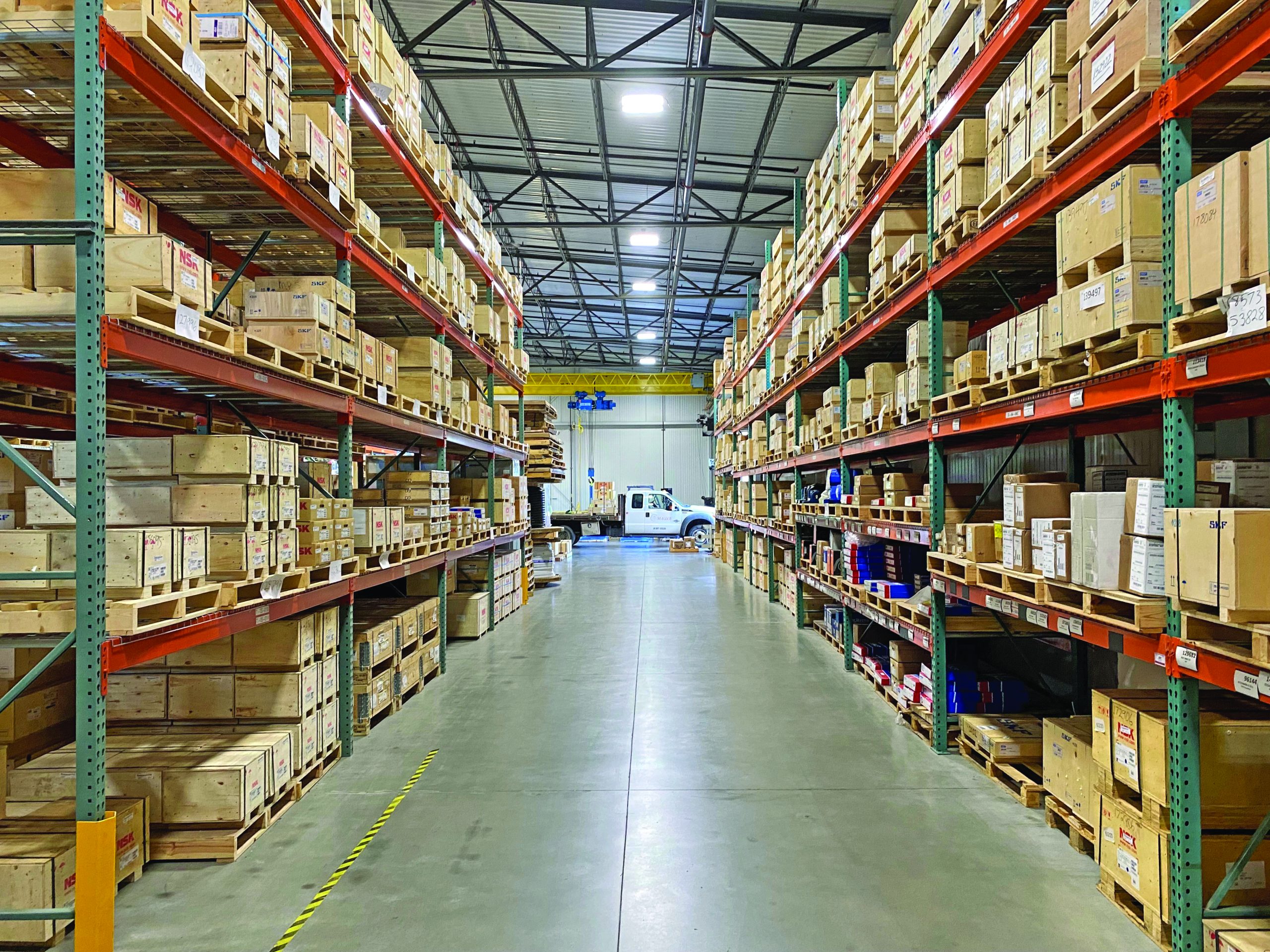
Wind-site visits
To that end, Malloy Electric’s experts visit a lot of wind sites to discuss applications with the operators, according to Mittleider.
“We do visit the sites a lot, but we don’t climb,” he said. “We support either the operators that self-perform those scopes of work during replacements or the service providers hired by those operators. We do use our site visits to collect information and sometimes even collect the samples and bring them back on a trailer or in the back of a pickup assize dictates. Our tear downs and investigations are done in either our shop, a service provider’s shop, or the manufacturer’s shop depending on the application.”
Getting into wind
For a company that is constantly striving to make sure wind turbines are working with the best parts, it’s a bit ironic that Malloy’s entry into the wind market is somewhat serendipitous. “It wasn’t maybe a conscious decision or a push to get into wind,” Mittleider said. “It was more of a pull into it.” Even though it started life as an electric motor repair company in 1945, Malloy Electric entered the wind industry in the late 1990s when a wind-farm operator who was experiencing premature failures on generators came to Malloy for help, according to Mittleider.
“It was our success in other industries and the people that were in those other industries who knew us for electric motor repair, both big and small,” he said. “They worked at that wind farm, and they realized the generator was pretty similar to an electric motor. They had good experience with Malloy in these other industries, and they thought we should be the people to talk to. We were able to help develop solutions for these failure modes and dramatically increase reliability of these generators.”
That job was only the beginning of Malloy’s wind experience, as well as forming the basis of how the company works with its customers, according to Mittleider. “The first step is to collect as much information as possible about the failure modes, application history, and what work they’ve been able to do on their own,” he said. “Typically, the next step will include getting at least one failed sample for investigation. We learn a lot about the failures from an inspection of a failed part.
For example, we’ve seen gearbox bearings come back with a particular failure mode described, but once thoroughly inspected at the lab, we find more below the surface. This deep evaluation and cooperation with the bearing manufacturers allows us to design a new part with upgraded geometry, materials, heat treatments, and coatings targeted at solving the whole problem.”
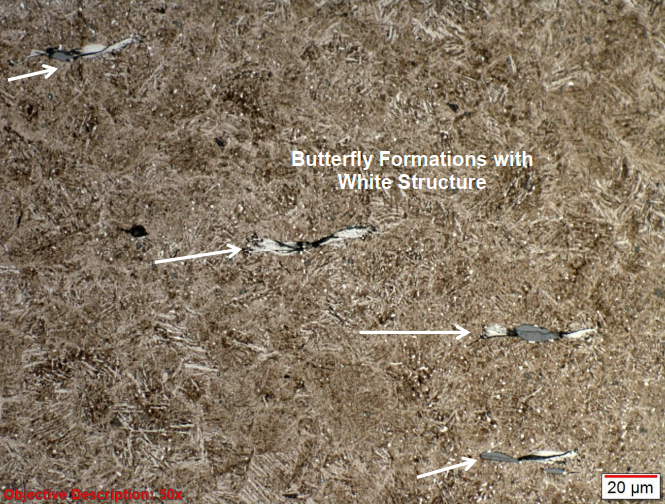
Failure analysis of blade bearings
That type of hands-on experience also applies to Malloy’s approach to dealing with failure analysis, according to Mittleider, particularly when it comes to blade bearings. “In the case of blade bearings, we’ll often be notified of the field observations such as: It’s leaking; there are pieces sticking out, or there’s a crack,” he said. Once the part is brought to Malloy’s facility, it gets cleaned up, then it’s torn down, dismantled, and marked, according to Mittleider.
“We get a chance to separate and open the bearing, which most operators and service providers don’t have either time or capabilities to do themselves,” he said. “They never get a chance to see inside. Once we see inside ourselves, we learn a lot more than can be learned in the field. For example, we have inspected blade bearings that were replaced because of one failure mode, but once opened, we found additional failure modes previously unknown. This type of investigation and investment in hands-on education helps us solve the problems in the most comprehensive way possible and can also help avoid introduction of new failure modes when implementing a solution.”
Failure analysis with blade bearings is often a bit different, according to Mittleider.
“Blade bearings are a specific type of bearing called a slewing bearing,” he said. “It’s typically a large diameter with rings that aren’t terribly thick. Respective to the diameter, they’re actually pretty thin in cross section. In most applications, there are filling plugs in the outer ring of the bearing. And that’s part of the difficulty and the limitation that the operators and service providers have in the field. First of all, they’re big, and they’re heavy, and you’ve got to be able to flip them over to get to both sides. But then you have to have some special tooling to disassemble. The procedure is elaborate and time consuming and a very messy process.”
Mittleider said he is particularly proud of how Malloy has been able to handle blade bearing teardowns over the company’s 24-year history with the wind industry. “These bearings are very large, typically quite dirty, and not easy to handle,” he said. “We have established a process of cleanup, teardown, and thorough inspection that has proven to provide us a great understanding of the life the bearing lived and point us to the root cause of failure. Working with these failures from the field is a dirty and time-consuming job but has offered an incredible education to the team at Malloy and to the operators that we’ve worked with.”
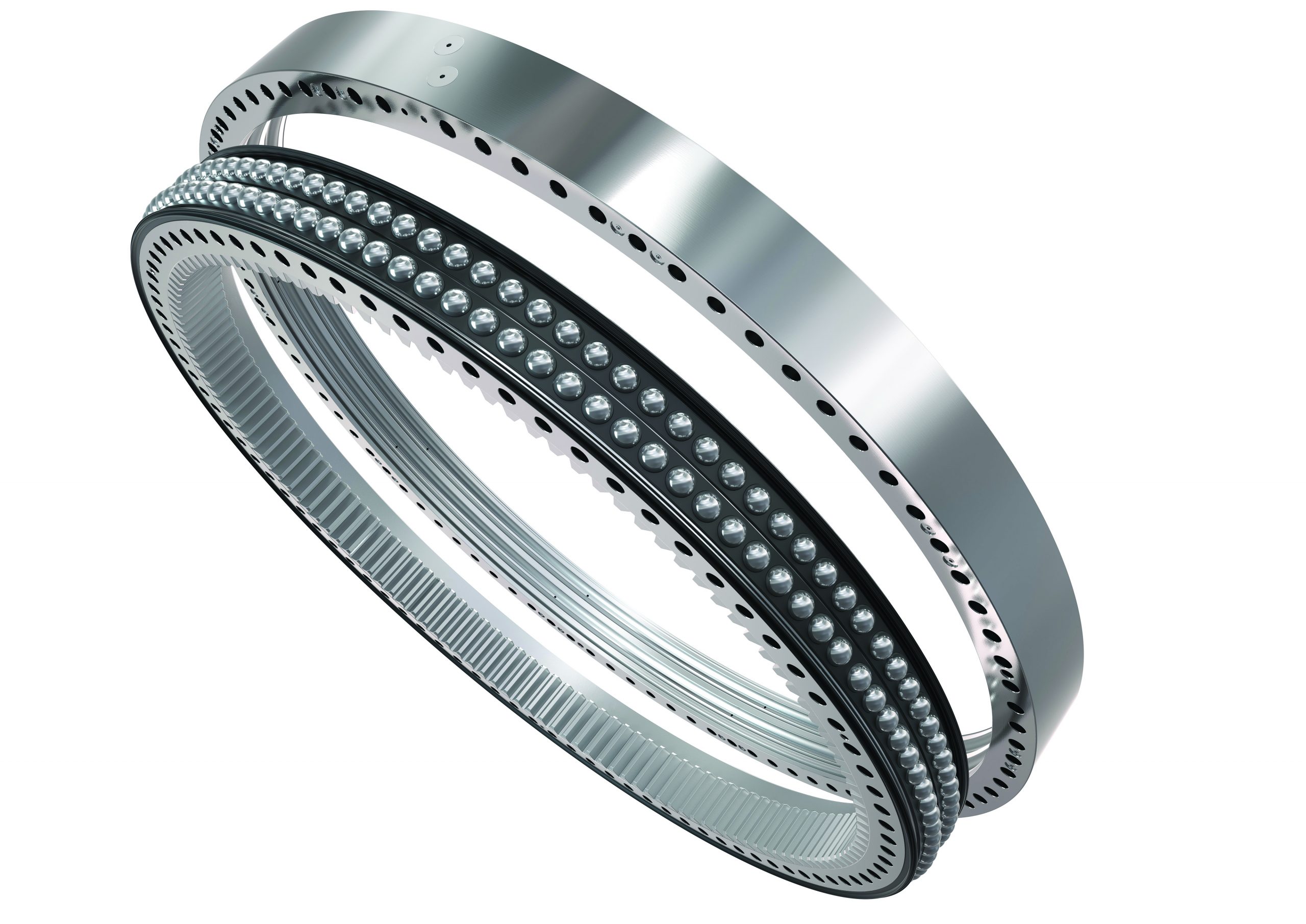
Working with operators
As new turbines continue to grow in size and push the limits of their components, Mittleider emphasized it’s even more important for Malloy to have the ability to go that extra mile for its customers’ repair challenges.
“We work closely with operators and service providers to learn about these as soon as possible so we can start working on our solutions for the next generation equipment,” he said. “Another part of this is the aging fleet. These older turbines have motors in need of refurbishment, still have need for replacement bearings, and in some cases, have subcomponents that have been obsoleted by the manufacturer such as breakers. In these cases, we can offer motor repairs, replacement bearings with current generation upgrades, and retrofit kits for obsolete breakers.”
That dedication to detail has been a large part of what has kept Malloy Electric’s customers coming back, and as the company continues into the future, Mittleider said the company will keep offering next-level expertise.
“The wind industry changes very fast; even in the last few years, we’ve seen changes in turbine design, OEM consolidation, and improvements in end-of-life recovery such as blade recycling,” he said. “Malloy will continue to develop new solutions and expand our inventory to support this growing industry.”
More info MalloyWind.com



















